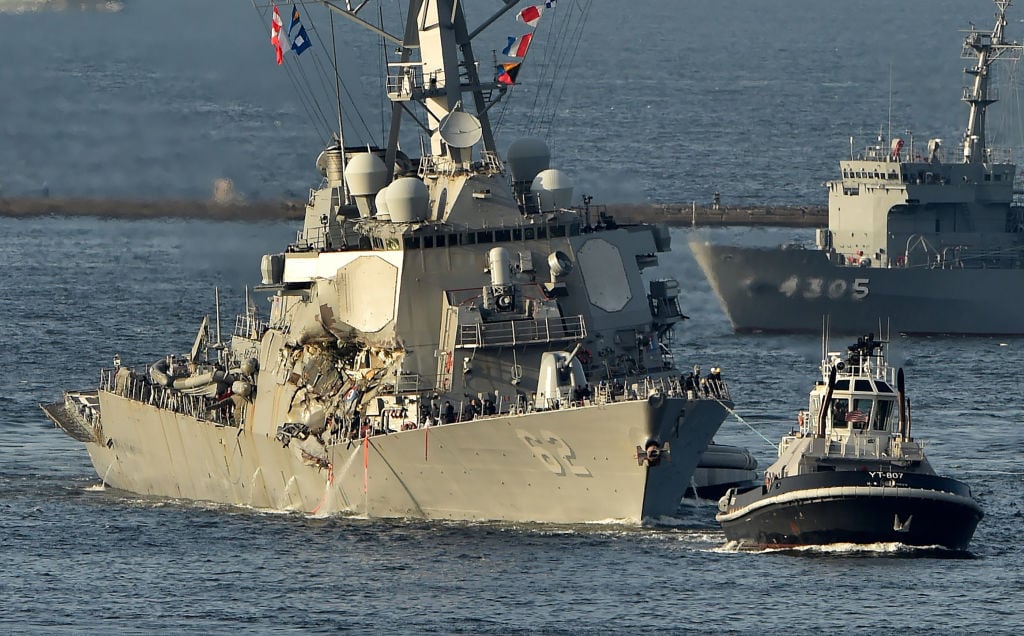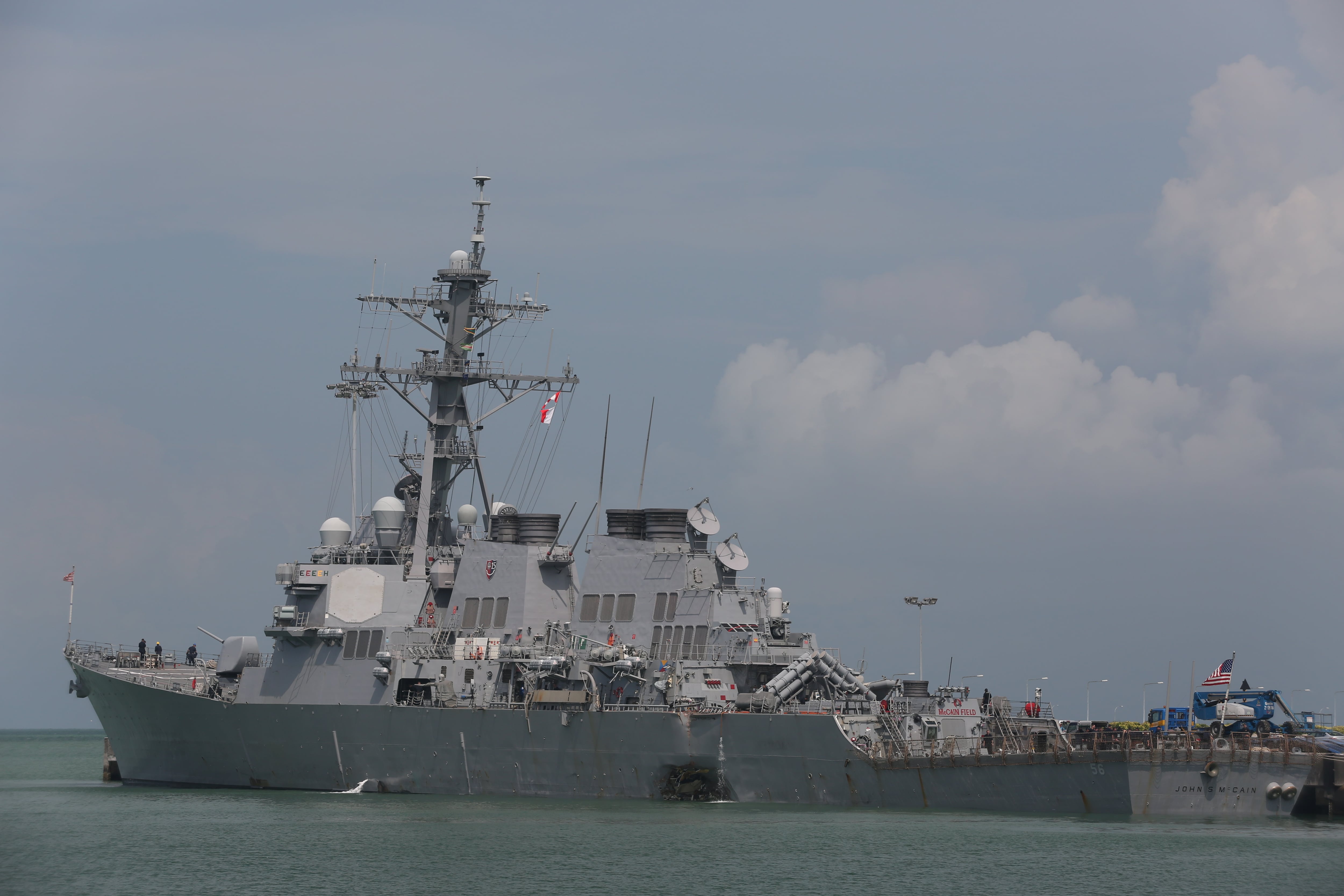WASHINGTON — In a tense exchange before the Senate Armed Services Committee, the four-star admiral who led the U.S. Navy’s internal review into two deadly collisions in 2017 told members that while two ships had tragic accidents that year, the rest of the fleet was collision-free.
Adm. Phil Davidson, now head of U.S. Pacific Command, was responding to a question from Sen. Angus King, I-Maine, about warnings that readiness was slipping in the fleet, as detailed last week in an investigation by ProPublica. The report dug into the years preceding the collisions of the destroyers Fitzgerald and John S. McCain in Asia that claimed the lives of 17 sailors.
King pressed Davidson about providing Congress with specific data regarding training and certifications of sailors prior to employment by the fleet, adding that the dual tragedies were preventable.
Instead of responding to the question about providing specific data, Davidson bristled and appeared to respond to the criticisms implicit in the ProPublica article, which laid out years of reports and warnings from senior leaders about readiness. Davidson took issue with the idea that readiness issues in the fleet were kept secret, and he pointed to his testimony in 2016 that detailed funding shortfalls for readiness accounts. Then Davidson pivoted and attempted to point to places where the Navy has been successful.
“These two collisions were a tragedy, there is no doubt about it,” Davidson said. “And all the senior leaders of the Navy feel a tremendous amount of accountability for it. But the fact of the matter is 280-odd other ships weren’t having collisions.”
RELATED

Davidson tried to continue but was cut off by King, who told him his answer was underwhelming.
“Airplanes are landing all over America, but just because they’re not crashing doesn’t mean they don’t need a high level of maintenance,” King responded. “To tell me that, that isn’t very convincing. Are you saying there were no failures that led to these collisions because there are 280 other ships that didn’t have collisions? Isn’t that the standard — no collisions?”
Davidson agreed that no collisions was the standard, but added that other units had performed well in combat.
“The other thing we need to remark upon is the combat performance,” Davidson continued. “We had ships in the Red Sea shooting down anti-ship cruise missiles; we’ve had extraordinary Tomahawk performance in that time frame; we had an aviation squadron shoot down a MiG aircraft in Syria.”
In another exchange with King, Davidson pointed to the Navy’s Comprehensive Review — led by Davidson — of the collisions, saying the Navy is making progress on the findings.
“The Navy feels a huge amount of accountability for this,” Davidson said. “The Navy tasked me to review those two collisions, I produced a 170-page report with 58 recommendations and the Navy has been moving out on those recommendations.”
King maintained that the issues were preventable.
“I’m not suggesting otherwise,” King said. “What I’m suggesting — and I urge you to read that [article] — is we had a preventable problem. There were multiple warnings. It wasn’t acted upon. I want to be reassured it is being acted upon.”
Davidson agreed to get data to King.
RELATED

Comprehensive Review
Davidson’s Comprehensive Review found that both the Japan-based 7th Fleet headquarters leadership and its ship commanders allowed training and proficiency to erode as they sought to keep ships underway to meet operational requirements.
“The risks that were taken in the Western Pacific accumulated over time and did so insidiously,” according to the review released Nov. 2, 2017. “The dynamic environment normalized to the point where individuals and groups of individuals could no longer recognize that the processes in place to identify, communicate and assess readiness were no longer working at the ship and headquarters level.”
The problems became easy to ignore because, prior to the mishaps, they were still getting the job done, the review argued.
The review also acknowledged that its surface warfare officers lacked sufficient navigation and seamanship skills, and recommended creating an “objective, standardized assessment program to periodically assess individual seamanship and navigation skills over the course of a surface warfare officer’s career.”
Since the review, the surface force has instituted new training standards for its officers that includes more simulator time and periodic reviews throughout an officer’s career. It is also constructing new simulators close to the waterfront to give bridge and combat information center watch teams more time to train together to prevent critical breakdowns in communication, such as what happened on the Fitzgerald prior to its collision.
David B. Larter was the naval warfare reporter for Defense News.




